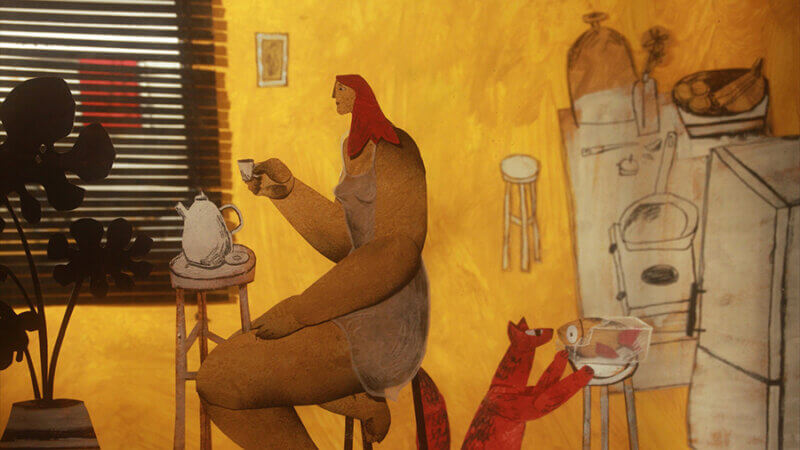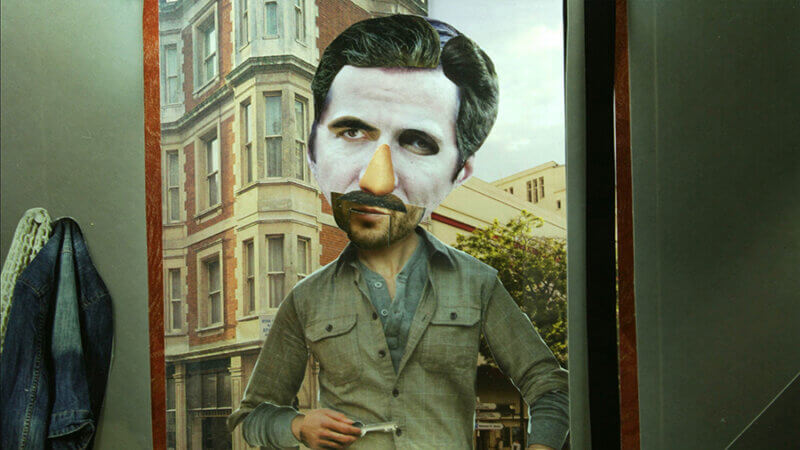Projecting Our Images: LIAF 2021 Review
The inaugural gala of London International Animation Festival served a political punch to audiences of this year’s celebration. The programme of shorts, curated by Abigail Addison, was entitled ‘Up Yours!’ and it was with some glee that she announced this before letting the films speak for themselves.
In the talk that followed, filmmakers were invited onto stage for a Q&A. Each of the films carried a unique message, touching upon issues surrounding race, gay rights, body image, sexual harassment, and gender equality. Amidst a feeling of mutual admiration for one another, the directors considered the way in which these messages were delivered in alternate ways: ‘To be direct or indirect?’ or, as one audience member put it, ‘shouty or not shouty’. Comfort Arthur, director of ‘Black Barbie’, explained how she always liked to allow space in a film for the audience to project their own images. Her film ‘Black Barbie’ explored a culture of skin bleaching and the cosmetic industry which devalued the beauty of darker women.

Anna, Cat and Mouse by Vayrua Yakovleva
Other films like ‘Anna, Cat and Mouse’ were even more subtle in their approach, relying on a nonverbal, visual language to convey an atmosphere of domestic abuse. The characters of Vayrua Yakovleva’s film were synchronistic in their transformations between cat and mouse, abuser and the abused. The effect was beautiful in that the images alone were enough to capture the dynamic relationship between the paper cut-out figures. By comparison films like Stacy Bias’s ‘Flying While Fat’ were more didactic. Bias combined interviews, informative motion graphics and anecdotes to reveal harsh truths about the way fat people are treated by airlines and other customers. Where information is key, it’s clear why a political filmmaker might be drawn to explainer video style animation. On the flipside Yakovleva relied on universal images of the hunter and the hunted to reach audiences.
Elsewhere at LIAF the programme was spread across several unique locations. These included the The Horse Hospital for an evening of Indie Japanese Animation and the Puppet Barge for Joseph Wallace’s retrospective. Whilst the political films of the gala were centered around their subjects, the ‘Trippy Worlds of Indie Japanese Animation’ took audiences on a mind-bending journey through nonsensical landscapes. In particular ‘A Bite of Bone’ relied on memory images, submerged dream logic and the undulating rhythm of dots on paper to tell a tale of childhood loss. Other animations sent viewers sleep-walking through neo-noir cityscapes. ‘Jungle Taxi’ and ‘Hunter’ characterized the emerging independent Japanese scene in their inky resemblance to graphic novels, a great jumping off point for any budding animator.

Natural Disaster by Joseph Wallace
At the Puppet Theatre Barge, it was wonderful to see the films of Joseph Wallace, a director whose steady output of puppet animation has culminated in his most ambitious project yet ‘Salvation Has No Name’. The stop-motion short, having just entered post-production, has thronged together a variety of animated talent to shed light on the refugee crisis. In the half-lit barge, humans and puppets alike gathered to watch films spanning from 2007 to present. As with any retrospective, it’s always rewarding to see the development of an artist from humble beginnings to more ambitious work. Wallace’s output of 1-2 films a year show the benefits of prolific filmmaking especially when starting out – certainly a feat to be reckoned with due to the notoriously slow form of stop-motion animation. Wallace attributed magazine and paper cut-outs to his guerrilla-style animations, being resourceful with found materials under the constraints of time and budget and then later joked ‘cut to me at 3 am moving bits of paper’.
LIAF audiences regrouped at the Barbican for the Best of Fest celebration and announcement of the winning films on Sunday. The spectrum of films chosen were witty, wry, and wonderfully absurd. And after a 10-day stint of watching dozens of animations, audience members may have been inclined to project their own images or perhaps to simply allow the animated imagery wash over their reclining minds.

